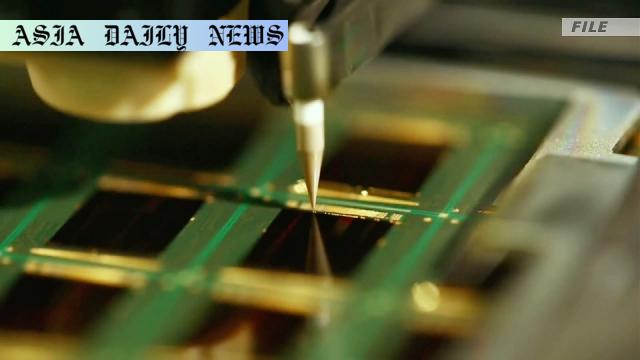Imports: US investigates whether reliance on importing semiconductors and pharmaceuticals could harm national security.
- US government examines potential national security risks from semiconductor and pharmaceutical imports.
- Probes include imports of chip-making devices and pharmaceutical ingredients.
- Section 232 may enable tariffs to protect national security.
- Analysts warn tariffs could disrupt supply chains and increase costs.

Introduction: The Growing Concern Over Imports
The US government has initiated national security investigations into the country’s reliance on imports of semiconductors, chip-making devices, and pharmaceuticals. This decision, announced by the Commerce Department on April 1, underscores growing concerns about the vulnerability of US supply chains to external disruptions. Such imports are integral to essential industries, and the analysis under Section 232 of the Trade Expansion Act aims to determine whether this dependency poses a risk to national security.
What is Section 232 of the Trade Expansion Act?
Section 232 is a legal provision that empowers the US government to investigate whether specific imports are threatening national security. If such a threat is confirmed, the administration gains the authority to impose trade restrictions, including tariffs. The current probes are a continuation of similar investigations that previously targeted imports of steel and aluminum. By leveraging this tool, the US seeks to encourage domestic production of strategic goods and reduce dependency on foreign suppliers.
Potential Impacts of Import Tariffs
While the government’s intention is to enhance national security, potential tariffs on critical imports such as semiconductors and pharmaceuticals could have unintended consequences. Analysts warn that these measures could raise costs for consumers and businesses, as well as disrupt complex global supply chains. For example, the majority of raw materials for semiconductors and pharmaceutical ingredients are produced in East Asia, and imposing additional levies might strain these international relationships. Economists also caution that a protectionist approach might deter innovation in the affected industries.
Policy Objectives and Domestic Manufacturing
President Donald Trump has repeatedly emphasized the importance of bringing manufacturing back to the US. He has argued that domestic production is essential to reducing dependency on imports and ensuring national security. The administration has also aimed to use tariffs as a bargaining chip to incentivize manufacturers to reopen factories within American borders, particularly in critical sectors like technology and healthcare.
Challenges to Policy Implementation
Despite these ambitions, implementing such policies remains challenging. Foremost among these challenges are the existing infrastructure and workforce gaps, which hinder the US from scaling up production quickly. Additionally, importing companies that rely on free trade oppose these tariffs, arguing that they could lead to retaliatory actions from other nations. Moreover, the global nature of supply chains, where components are produced and assembled across continents, makes it nearly impossible to avoid international cooperation entirely.
Conclusion: Weighing the Pros and Cons
The US government’s investigations reflect the complexity of balancing economic policy with national security concerns. While the aim of strengthening domestic production is commendable, the potential repercussions on global trade relations and supply chain stability cannot be ignored. Moving forward, policymakers must carefully evaluate whether the benefits of imposing tariffs outweigh the risks, while developing alternative strategies to enhance domestic manufacturing capacity sustainably.



Commentary
The Importance of Ensuring National Security Through Imports
The US government’s decision to investigate the reliance on imports for semiconductors, chip-making devices, and pharmaceuticals comes at a crucial moment. As globalization has deepened over the years, supply chains have become more interconnected and interdependent. However, this integration has also created vulnerabilities, especially in critical sectors that underpin national security. The ongoing probe reflects a legitimate concern about safeguarding America’s interests in an increasingly unstable global landscape.
Domestic Production: Ambition vs. Reality
While the push for domestic production sounds compelling on paper, achieving it is far from straightforward. Reviving industries such as chip-making requires massive investments in infrastructure, skilled labor, and technology. For instance, leading semiconductor production facilities need billions of dollars to construct and years to operationalize. Similarly, the pharmaceutical sector relies on complex chemical processes that cannot be replicated overnight. Although the administration’s rhetoric about self-sufficiency is laudable, it must be backed by realistic, long-term planning and incentives.
Global Trade in a Multilateral World
The potential disruption to international trade caused by tariffs cannot be ignored. Countries like China, Taiwan, and South Korea, which dominate global semiconductor production, are essential trade partners. Imposing tariffs may strain diplomatic ties and invite retaliatory measures, ultimately harming the very industries the US aims to protect. A multilateral approach that leverages alliances and partnerships could prove more effective in addressing these challenges without the downsides of protectionist policies.
Balancing Risks and Rewards
As the investigations progress, policymakers must tread carefully. While ensuring national security is non-negotiable, it is equally important to consider the economic implications of restrictive trade practices. A balanced approach that combines incentives for domestic investment with international cooperation could provide the best path forward. Stakeholders from across industries, government, and academia must work together to craft solutions that secure America’s future without inadvertently creating new challenges.